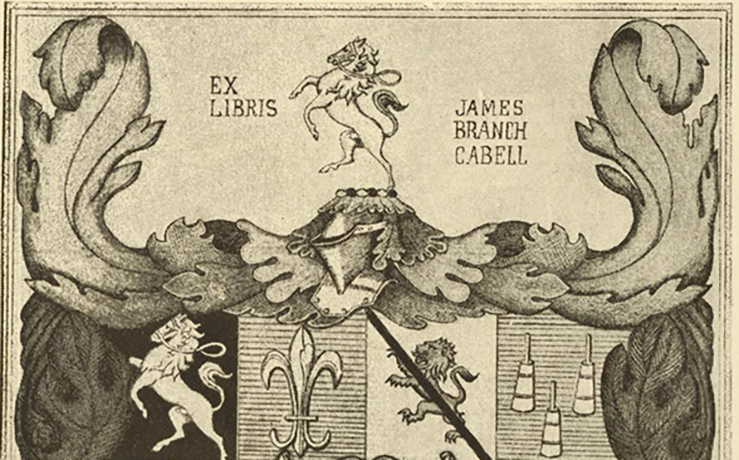'Ex Libris: Traces of Ownership' explores the telling evidence people leave behind in their books
November 20, 2018
We’ve all done it. Or many of us have. We’ve scribbled notes in the margin of a book, highlighted or underlined a particular passage, tucked a clipping between pages, used a pretty greeting card or a love letter as a bookmark. Human beings interact with books in both intellectual and tangible ways.
A new online exhibit by VCU Libraries Gallery explores those individual traces. Much can be learned or revealed by paying attention to margin notes and ephemera left in books.
James Branch Cabell Library's Special Collections and Archives offers rich opportunities for such explorations. It holds more than 50,000 books and periodicals dating from the late 19th century to the present. The rare book collection within the department is made up of materials acquired from donors and book dealers. Many of the previous owners of these books personalized them with bookplates, inscriptions and marginalia. Some contain pasted in photographs, correspondence or other ephemera.
“Ex Libris:Traces of Ownership” explores a simple but interesting question: What does the evidence left behind in books reveal about their previous owners?
Among the subjects and connections that turn up in the exhibit are the library’s namesake, author James Branch Cabell, poet Larry Levis, cartoonist Billy deBeck, comic Harpo Marx, poet Ezra Pound, educator Booker T. Washington, and others.
This online exhibition was created by Ray Bonis, senior research associate in Special Collections and Archives at James Branch Cabell Library. Bonis, who has worked at VCU Libraries for nearly 30 years, is broadly recognized for his knowledge of Richmond history.
“I tried to focus on Richmond-related books. These books were either owned by Richmonders or are related to Richmond in some way. This exhibit could have included dozens and dozens of books we own. It was hard to narrow down the list of books.”
“Everyone treats books differently,” Bonis continues. “Many of these books were collected by avid book collectors and book lovers. They thought highly of their books but marked them or placed items in them to remind them of certain times and places in their life. These things are like evidence left behind of their memories. It gives us something more that we can study and learn about them.
“The personal books owned by writers or historic figures are often extensions of their personal papers. All say something about them. What books did they collect and save? What did they think was important or special? The books we own say something about ourselves.”
 Chat
Chat